
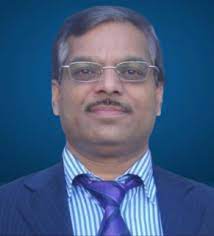
Prof. Rajkumar Buyya
IEEE Fellow
Director, Cloud Computing and Distributed Systems (CLOUDS) Lab,
The University of Melbourne, Australia
CEO, Manjrasoft Pvt Ltd, Melbourne, Australia
Title: Neoteric Frontiers in Cloud, Edge, and Quantum Computing
Abstract:
Computing is being transformed to a model consisting of services that are delivered in a manner similar to utilities such as water, electricity, gas, and telephony. In such a model, users access services based on their requirements without regard to where the services are hosted or how they are delivered. Cloud computing paradigm has turned this vision of "computing utilities" into a reality. It offers infrastructure, platform, and software as services, which are made available to consumers as subscription-oriented services. Cloud application platforms need to offer (1) APIs and tools for rapid creation of elastic applications and (2) a runtime system for deployment of applications on geographically distributed Data Centre infrastructures (with Quantum computing nodes) in a seamless manner.
The Internet of Things (IoT) paradigm enables seamless integration of cyber-and-physical worlds and opening opportunities for creating new class of applications for domains such as smart cities, smart robotics, and smart healthcare. The emerging Fog/Edge computing paradigms support latency sensitive/real-time IoT applications with a seamless integration of network-wide resources all the way from edge to the Cloud.
This keynote presentation will cover (a) 21st century vision of computing and identifies various IT paradigms promising to deliver the vision of computing utilities; (b) innovative architecture
for creating elastic Clouds integrating edge resources and managed Clouds, (c) Aneka 5G, a Cloud Application Platform, for rapid development of Cloud/Big Data/AI applications and their deployment on private/public Clouds with resource provisioning driven by SLAs, (d) a novel FogBus software framework with Blockchain-based data-integrity management for facilitating end-to-end IoT-Fog/Edge-Cloud integration for execution of sensitive IoT applications, (e) experimental results on deploying Cloud and Big Data/ IoT applications in engineering, and health care (e.g., COVID-19), deep learning/Artificial intelligence (AI), satellite image processing, and natural language processing (mining COVID-19 research for new insights) on elastic Clouds, (f) QFaaS: A Serverless Function-as-a-Service Framework for Quantum Computing, and (g) directions for delivering our 21st century vision along with new directions for future research in Cloud, Edge, and Quantum computing.
Biography:
Dr. Rajkumar Buyya is a Redmond Barry Distinguished Professor and Director of the Cloud Computing and Distributed Systems (CLOUDS) Laboratory at the University of Melbourne, Australia. He is also serving as the founding CEO of Manjrasoft, a spin-off company of the University, commercializing its innovations in Cloud Computing. He has authored over
850 publications and seven textbooks including "Mastering Cloud Computing" published by McGraw Hill, China Machine Press, and Morgan Kaufmann for Indian, Chinese and international markets respectively. Dr. Buyya is one of the highly cited authors in computer science and software engineering worldwide (h-index=167 g-index=365, and 147,500+ citations). He has been recognised as a "Web of Science Highly Cited Researcher" for seven times since 2016,"Best of the World" twice for research fields (in Computing Systems in 2019 and Software Systems in 2021/2022/2023) as well as"Lifetime Achiever" and "Superstar of Research" in "Engineering and Computer Science" discipline twice (2019 and 2021) by the Australian Research Review.
Software technologies for Grid, Cloud, and Fog computing developed under Dr.Buyya's leadership have gained rapid acceptance and are in use at several academic institutions and commercial enterprises in 50+ countries around the world. Manjrasoft's Aneka Cloud technology developed under his leadership has received "Frost New Product Innovation Award". He served as founding Editor-in-Chief of the IEEE Transactions on Cloud Computing. He is currently serving as Editor-in-Chief of Software: Practice and Experience, a long-standing journal in the field established 50+ years ago. He has presented over 700 invited talks (keynotes, tutorials, and seminars) on his vision on IT Futures, Advanced Computing technologies, and Spiritual Science at international conferences and institutions in Asia, Australia, Europe, North America, and South America. He has recently been recognized as a Fellow of the Academy of Europe. For further information on Dr.Buyya, please visit his cyberhome:www.buyya.com
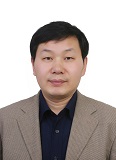
Prof. Wanyang Dai
Nanjing University,China
Title: A unified projection representation of generative AI models supported with quantum computers
Abstract:
We provide a unified projection representation for generative AI models. The projection can be realized through conditional expectation for a given dataset with a terminal random variable. This random variable can be designed in different way corresponding to either generative decision-making or generative prediction. The projection can be represented by different models such as a linear or nonlinear regression model, a convolution neural network (CNN), a multi-layer perceptron (MLP), or a Kolmorov-Arnold network (KAN). Typical applications of the projection include transformer and diffusion transformer based large language model ChatGPT and generative video model Sora. To provide the supercomputing power for these big models, we build efficient quantum computers via different technologies such as quantum entanglements that are realized via (neutral) spin-atoms & indirect-measurement oriented feedback controls. Decision-making with robot routing algorithm via generative AI, diffusion model, blockchained federated learning and game-theoretic policy will also be presented and simulated.
Biography:
Wanyang Dai is a Distinguished Professor in Mathematics Department of Nanjing University, Chief Scientist at Su Xia Control Technology, President and CEO of U.S. based (blochchain and quantum computing) SIR Forum (Industial 6.0 Forum), a Special Guest Expert in Jiangsu FinTech Research Center, President of Jiangsu Probability & Statistics Society, Chairman of Jiangsu Big Data-Blockchain and Smart Information Special Committee, Chief Scientist at Depths Digital Economy Research Institute, and Editor-in-Chief of Journal of Advances in Applied Mathematics, where his research includes stochastic processes related optimization and optimal control, admission/scheduling/routing protocols and performance analysis/optimization for various projects in BigData-Blockchain oriented quantum-cloud computing and the next generation of wireless and wireline communication systems, forward/backward stochastic (ordinary/partial) differential equations and their applications to queueing systems, stochastic differential games, communication networks, Internet of Things, financial engineering, energy and power engineering, etc. His “influential” achievements are published in “big name” journals including Probability in the Engineering and Informational Sciences, Quantum Information Processing, Operational Research, Operations Research, Computers & Mathematics with Applications, Communications in Mathematical Sciences, Journal of Computational and Applied Mathematics, Queueing Systems, Mathematical and Computer Modeling of Dynamical Systems, etc. His researches are awarded as outstanding papers by various academic societies, e.g., IEEE Top Conference Series, etc. He received his Ph.D. degree in applied mathematics jointly with industrial engineering and systems engineering from Georgia Institute of Technology, Atlanta, GA, U.S.A., in 1996, where he worked on stochastics and applied probability concerning network performance modeling and analysis, algorithm design and implementation via stochastic diffusion approximation. The breakthrough results and methodologies developed in his thesis were cited, used, and claimed as “contemporaneous and independent” achievements by some other subsequent breakthrough papers that were presented as “45 minutes invited talk in probability and statistics” in International Congress of Mathematicians (ICM) 1998, which is the most privilege honor in the mathematical society. The designed finite element-Galerkin algorithm to compute the stationary distributions of reflecting Brownian motions (weak solutions of general dimensional partial differential equations) is also well-known to the related fields.
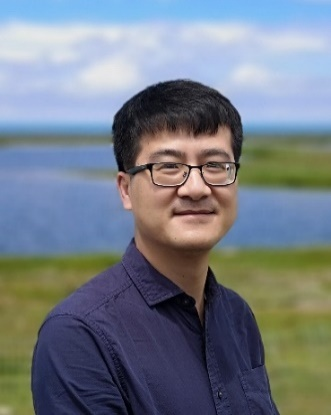
Prof. Qinmin Yang
Zhejiang University, China
Title: Enhancing Wind Energy Harvesting by Industrial Data Intelligence
Abstract:
Wind energy has been considered to be a promising alternative to current fossil-based energies. Large-scale wind turbines have been widely deployed to substantiate the renewable energy strategy of various countries. In this talk, challenges faced by academic and industrial communities for high reliable and efficient exploitation of wind energy are discussed. Industrial data intelligence is introduced to (partially) overcome problems, such as uncertainty, intermittence, and intense dynamics. Theoretical results and attempts for practice are both present.
Biography:
Qinmin Yang received the Bachelor's degree in Electrical Engineering from Civil Aviation University of China, the Master of Science Degree in Control Science and Engineering from Institute of Automation, Chinese Academy of Sciences, and the Ph.D. degree in Electrical Engineering from the University of Missouri-Rolla.
He has been an advanced system engineer with Caterpillar Inc., and a Post-doctoral Research Associate at University of Connecticut. Since 2010, he has been with the State Key Laboratory of Industrial Control Technology, the College of Control Science and Engineering, Zhejiang University, China, where he is currently a professor. He has also held visiting positions in University of Toronto and Lehigh University. He has been serving as an Associate Editor for IEEE Transactions on Systems, Man, and Cybernetics: Systems, IEEE Transactions on Neural Networks and Learning Systems, Transactions of the Institute of Measurement and Control, Processes, and Automatica Sinica. His research interests include intelligent control, renewable energy systems, smart grid, and industrial big data.
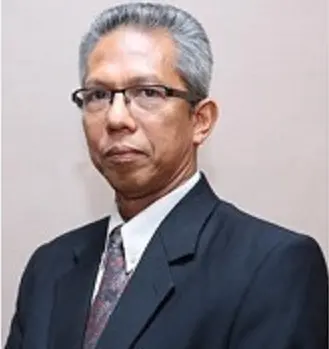
Prof. Lazim Abdullah
Universiti Malaysia Terengganu, Malaysia
Title: Developing Type-2 Fuzzy u-Control Chart Considering Probability based-Average Run Length
Abstract:
Fuzzy sets are an emerging trend in shaping the development of control charts of statistical process control. The sets are germane to vague data that comes from incomplete or inaccurate measurements. Nevertheless, fuzzy sets are inadequate in some areas of industries since their membership functions are crisp numbers. The fuzzy sets are not fully able to compute higher level of uncertainties which might degrade the performance of the analysis.Therefore, type-2 fuzzy sets are proposed to be merged with control charts since these sets are hypothesised to be more capable in detecting a defect of process control. This paper aims to develop interval type-2 fuzzy u (IT2Fu) charts as a new approach in detecting defects. In addition, this paper presents a comparative analysis of performances between traditional u-control charts, type-1 fuzzy u-control charts, and type-2 fuzzy u-control charts. Twenty-three samples of lubricants data with forty-eight subgroups were examined to identify the defects. The output showed that all of the control charts produced almost similar results except for data 14 which is “out of control” in IT2Fu-control charts, but “in control” in traditional u-control chart and “rather in control” in type-1 fuzzy u-control chart. Furthermore, the performances of the charts were compared using a probability-based average run length (ARL) where probability type 1 error is computed. It was found that the ARL value of IT2Fu-control chart showed the lowest value among the three types of charts. The analysis indicated that IT2Fu-control chart outperformed the traditional u-control chart and type-1 fuzzy u-control chart. The results obtained seemto support the idea that IT2Fu-control chart is more sensitive compared to type 1 fuzzy u-control chart and traditional u-control chart, so that IT2Fu-control charts are able to adequately support incomplete and vague data of process control.
Keywords: Interval type-2 fuzzy set, quality control, type-1 fuzzy set, u-control chart, average run length
Biography:
Lazim Abdullah is a Professor of Computational Mathematics at the Faculty of Computer Science and Mathematics, Universiti Malaysia Terengganu. He received his Ph.D in Information Technology from the Universiti Malaysia Terengganu, in 2004. His research and expertise focus on fuzzy set theory of mathematics, decision-making models, applied statistics, and their applications to social ecology, environment, health sciences and management. His research findings have been published in more than 380 publications including refereed journals, conference proceedings, chapters in book, monographs, and textbooks. He was ranked among the world’s top 2% scientists by Stanford University in the field of artificial intelligence and image processing. Currently, he is the Head of the Data and Digital Sciences Research Cluster at the Universiti Malaysia Terengganu. Prof Lazim is a member of the IEEE Computational Intelligence Society, and a member of International Society on Multiple Criteria Decision Making.
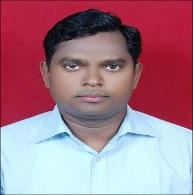
Assoc. Prof. Prabira Kumar Sethy
IEEE Senior Member
Department of Electronics and Communication Engineering,
Guru Ghasidas Vishwavidyalaya, Bilaspur, C.G., India
Central University, Govt.of India
Title: Image Recognition Via Deep Learning
Abstract:
This talk delves into the transformative applications of deep learning in image recognition, spanning diverse domains including medicine and agriculture. Focusing on convolutional neural networks (CNNs), we explore their profound impact on perceiving and classifying visual data with exceptional accuracy and efficiency. Through an interdisciplinary lens, we examine the adaptation of deep learning methodologies to medical imaging, facilitating precise diagnoses and treatment planning. Furthermore, we uncover their utilization in agricultural imagery, revolutionizing crop monitoring, disease detection, and yield prediction. By elucidating cutting-edge techniques and real-world applications, this talk illuminates the pivotal role of deep learning in reshaping healthcare and agriculture through image recognition.
Biography:
Dr. P.K. Sethy is an esteemed Associate Professor in the Department of Electronics and Communication Engineering at Guru Ghasidas Vishwavidyalaya (Central University, Govt. of India), Bilaspur, Chhattisgarh, India since December 2023. Prior to this, he had served at Sambalpur University (State University, Govt. of Odisha) from February 2013 to December 2023, and worked as an Engineer in Doordarshan, Ministry of Broadcasting, Govt. in India, between August 2009 and February 2013.
Holding a Ph.D. from Sambalpur University, M. Tech. from IIT Dhanbad, and B.E. from BPUT Odisha. Dr. Sethy is from a small village, named Kapundi, situated on the banks of the Baitarani River in the Keonjhar District of Odisha. His early education, including primary and intermediate studies, took place in Keonjhar, Odisha.
Dr. Sethy is an Editor of three reputable journals and serves as an editorial board member for the International Journal of Electrical and Computer Engineering and Ingénierie des Systèmes d’Information (IIETA). Additionally, he serves as an editorial member for Automation, Control and Intelligent Systems (Science Publishing Group) and PriMera Scientific Engineering (ISSN: 2834-2550). He also holds the position of Associate Editor of Onkologia I Radiotherapy.
With two patents and one copyright to his name, Dr. Sethy has been recognized for his exceptional contributions. In 2020, he received the "InSc Young Achiever Award" for his research paper on "Detection of coronavirus (COVID-19) based on Deep Features and Support Vector Machine," organized by the Institute of Scholars, Ministry of MSME, Government of India. As a Senior Member of IEEE, he actively engages as a reviewer for various journals and takes on the role of session chair in international conferences.